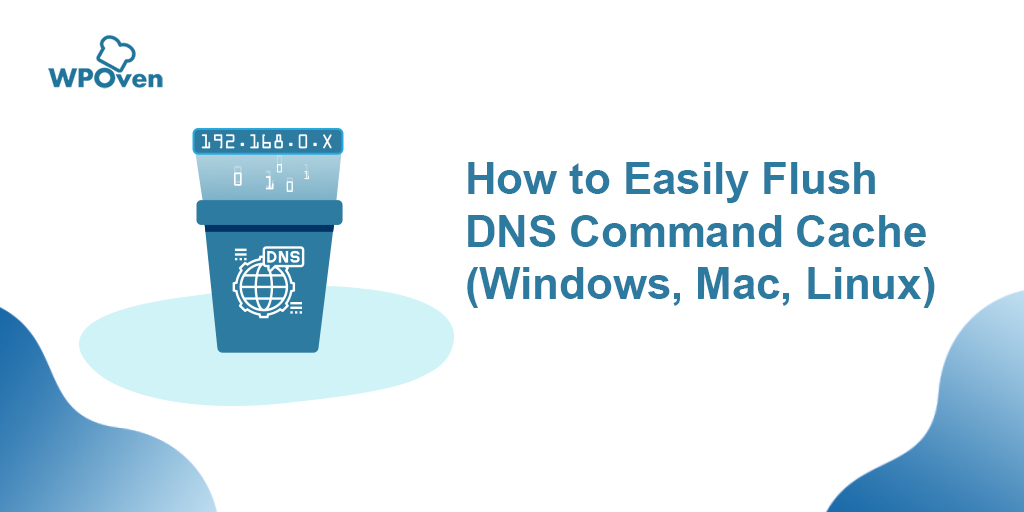

When you come in, you can see the option to “Flush DNS” at the bottom of the list window on the left. But here we save the time, just click the “View button”.Ĥ. Click the “scan button” to scan and delete some features on your Mac. Click on Maintenance and you can see that there is a “view button” and a “scan button”. You can see the Toolkit options and click on itģ.
#Osx flush dns software
Download PoweMyMac software and open itĢ. PowerMyMac provides you with a one-stop flush DNS operation! Using PowerMyMac, you no longer have to flush your DNS using the terminal and it’s a pretty simple process without having to type in commands or such.ġ. Is it complicated to use the terminal to flush the DNS cache? It's ok! We find a way to get your DNS flushed the easier way which is using a third party program and we strongly suggest using PowerMyMac to help you with your DNS and much more. To fully flush all DNS caches, you’ll need to clear both the Multicast DNS (MDNS) and Unicast DNS (UDNS). Wait for the audio alert to signal a successful flush.įor OS X Yosemite versions 10.10, 10.10.1, 10.10.2, and 10.10.3 the process is slightly different. Sudo dscacheutil -flushcache sudo killall -HUP mDNSResponder say cache flushedĤ. Enter the following syntax at the command line:

#Osx flush dns how to
Sudo killall -HUP mDNSResponder sudo killall mDNSResponderHelper sudo dscacheutil -flushcache say MacOS DNS cache has been cleared How to flush the DNS cache in Mac OS X El Capitan and Yosemiteīoth systems can flush the DNS cache in the following ways.Ģ. If for some reason the above syntax doesn’t work, you can use the following syntax in the Terminal instead: Listen out for the audio alert to signal that the cache has been successfully cleared. Sudo killall -HUP mDNSResponder say DNS cache has been flushedĤ.

Enter (or copy-and-paste if it’s easier) the following syntax at the command line: Refreshing the DNS cache on macOS Sierra is a little difference in syntax from refreshing the cache on High Sierra.Ģ. How to flush the DNS cache in macOS Sierra You should now see a message saying “macOS DNS cache reset.”ĥ. Press Return, enter your password, and press Return again.Ĥ. Enter the following syntax at the command line: sudo killall -HUP mDNSResponder sleep 2 echo macOS DNS Cache Reset | sayģ. Open the Finder and go to Applications > Utilities > Terminal.Ģ. How to flush the DNS cache in macOS High Sierraġ. However, perhaps this guide about how to flush DNS on Mac can help you figure things out. To be honest, it makes more sense why a techy person such as a network administrator or web developer or such are usually in charge of doing those tasks.

Here is the how-to that you’ve been looking for Flushing DNS on Macs is a little different from doing it on computers and the method is also different depending on the OS that you are currently using. So now you know why you need to keep reading the how to flush DNS on Mac. Ever notice those warnings check DNS settings and such? That could be one of the main reasons. Why do you need to care about DNS and how it affects you? Well, there are times when a site has changed its DNS settings and since it has been saved in your Mac, it could lead to confusion and could make it difficult to access said site. So when you try to visit a website such as the computer won’t really understand that as the computer only speaks numbers, so it needs the DNS protocol to change it into a language that it can understand. What is DNS?ĭNS is an actual protocol on the internet that helps translate what we know in alphabetical knowledge, which is way easier to remember and change it to IP addresses which the computer knows. The easiest way to flush DNS on your Mac Part 5. Let’s start off with, what exactly is DNS? We know, most of the time only network administrators, web developers, and system administrators usually need to know how to flush DNS on Mac but since a lot of users are just using their Macs at home, there are some good things to flushing DNS once in a while.


 0 kommentar(er)
0 kommentar(er)
